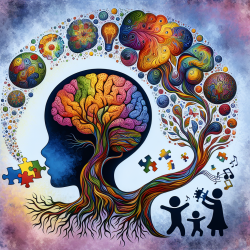As practitioners dedicated to enhancing children's lives through effective therapy, it’s crucial to stay informed about the latest research and methodologies. One significant area of focus is stroke awareness, especially in ethnic minority communities where awareness is often lower, leading to delayed medical responses and poorer outcomes.
According to the systematic review titled "Health promotion interventions for increasing stroke awareness in ethnic minorities: a systematic review of the literature," there are several key takeaways that can be implemented to improve our practices. This review synthesized evidence from various studies and highlighted effective strategies and areas needing further research.
Key Findings from the Review
The review included 18 studies, predominantly from the United States, focusing on African-American and Hispanic populations. The interventions varied widely in their approaches but shared common goals of increasing stroke symptom awareness and encouraging timely emergency responses.
- Community-Based Interventions: Most effective programs were community-based, utilizing settings like churches, schools, and community centers. These environments fostered trust and accessibility.
- Cultural Adaptation: Successful interventions tailored their content to the cultural and linguistic needs of the target population. For example, using bilingual materials and culturally relevant examples significantly improved engagement.
- Interactive and Experiential Learning: Programs that incorporated interactive elements, such as role-playing and multimedia resources, were more effective in increasing knowledge retention and behavioral intent.
- Mixed-Methods Approach: Combining qualitative and quantitative research methods provided a comprehensive understanding of the interventions' effectiveness and areas for improvement.
Implications for Practitioners
For practitioners working with children, these findings can be translated into actionable strategies to enhance stroke awareness in ethnic minority communities:
- Leverage Community Resources: Collaborate with local community centers, schools, and faith-based organizations to deliver tailored stroke awareness programs. These trusted institutions can help bridge cultural and linguistic gaps.
- Use Culturally Relevant Materials: Develop educational materials that reflect the cultural and linguistic backgrounds of the communities you serve. This could include translating materials into multiple languages and incorporating culturally specific health beliefs and practices.
- Interactive Learning: Implement interactive teaching methods, such as simulations and multimedia presentations, to make learning about stroke symptoms engaging and memorable.
- Engage Families: Encourage children to share what they learn with their families. This not only reinforces their knowledge but also spreads awareness within the community.
Encouraging Further Research
While the review provides valuable insights, it also highlights the need for further research, particularly in non-US contexts and among other ethnic minorities. Practitioners are encouraged to contribute to this body of knowledge by conducting and publishing their own research, focusing on the unique needs and characteristics of their communities.
To read the original research paper, please follow this link: Health promotion interventions for increasing stroke awareness in ethnic minorities: a systematic review of the literature.










